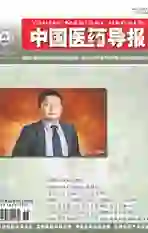后路椎间融合及经椎间孔入路椎间融合治疗伴椎弓断裂的退变性腰椎滑脱症的临床效果比较
2017-07-31侯刚王四清孙达峰
侯刚++++++王四清++++++孙达峰+++++路晓++++++周金军
[摘要] 目的 探讨后路椎间融合及经椎间孔入路椎间融合治疗伴椎弓断裂的退变性腰椎滑脱症的临床疗效。 方法 回顧性分析2011年1月~2015年12月东台市人民医院骨科收治的120例伴椎弓断裂的退变性腰椎滑脱症患者的临床资料,按手术方法不同分为两组,其中60例采用后路椎间融合为对照组,60例采用经椎间孔入路椎间融合为观察组。比较两组手术时间、住院费用、术中出血量;术后随访1年,比较两组JOA评分,定期复查X线片,观察融合情况及腰椎稳定性。 结果 观察组手术时间、术中出血量和住院费用均低于对照组,差异有统计学意义(P < 0.05)。两组术后OD指数均低于术前,且观察组低于对照组,差异有统计学意义(P < 0.05)。两组融合率差异无统计学意义(P > 0.05)。两组随访期间椎体活动度和透亮带宽度差异无统计学意义(P > 0.05),而椎间隙平均高度对照组低于观察组,差异有统计学意义(P < 0.05)。对照组2例出现脑脊液漏,与术中分离瘢痕粘连有关,术后予头低脚高位,症状缓解。随访期间未出现无融合器移位、下沉及钉棒松动、断裂发生。两组均未出现感染。 结论 经椎间孔入路椎间融合在伴有椎弓峡部裂的腰椎滑脱症患者中创伤小、复位理想、临床疗效满意,腰椎稳定性好,骨性融合率高,值得临床推广应用。
[关键词] 椎间融合;椎间孔;椎弓断裂;腰椎滑脱症
[中图分类号] R687.3 [文献标识码] A [文章编号] 1673-7210(2017)06(c)-0094-04
[Abstract] Objective To investigate the clinical effect of posterior interbody fusion and intervertebral foramen fusion in the treatment of degenerative lumbar spondylolisthesis with vertebral fracture. Methods From January 2011 to December 2015, in Department of Orthopedics, Dongtai People's Hospital, the clinical data of 120 patients with vertebral fracture degeneration lumbar spondy lolisthesis were analyzed retrospectively. according to the operation method they were divided into observation group and control group, 60 cases with posterior interbody fusion were as control group, and 60 cases with intervertebral foremen fusion were as observation group. The operative time, hospitalization cost and intraoperative blood loss of the two groups were compared. 1 year after operation, the JOA scores were compared, the X-ray films were regularly reviewed to observe the fusion and lumbar stability. Results The operation time, intraoperative blood loss and hospitalization cost were in the observation group lower than those in the control group, the differences were statistically significant (P < 0.05). The ODI of the observation group was lower than that of the control group, the difference was statistically significant (P <0.05). There was no significant difference of fusion rate between the two groups (P > 0.05). There was no significant difference in vertebral activity and translucent band width between the two groups (P > 0.05), but the average height of the intervertebral space of control group was lower than that of the observation group, the difference was statistically significant (P <0.05). In the control group, there were 2 cases of cerebrospinal fluid leakage, which was related to the separation of scar adhesions during operation. During the follow-up, there was no dislocation of the fusion, sinking and nail bar loosening, and the fracture occurred. No infection in both groups. Conclusion Intervertebral forumen fusion is superior to lumbar spondylolisthesis in patients with lumbar spondylolisthesis. The clinical effect is satisfactory, the stability of lumbar vertebra is good and the fusion rate is high. It is worthy of clinical application.
[Key words] Intervertebral fusion; Intervertebral foramen; Pedicle fracture; Lumbar spondy lolisthesis
腰椎峽部裂又称为椎弓峡部裂或峡部不连,主要因腰椎一侧或两侧椎弓上下关节突之间的峡部骨质缺损不连续,其本质是假关节的形成[1]。腰椎峡部裂常导致腰椎滑脱,同时发生相邻节段的退变和椎管狭窄,临床表现以下腰痛、腰后伸痛和局部深压痛为主,部分患者可有下肢放射痛。目前治疗腰椎椎弓断裂伴滑脱的主要方法是腰椎融合内固定术,即可矫正滑脱,也可维持脊柱局部的稳定性。传统后路腰椎融合术在临床上已广泛开展,但存在手术创伤大,术后腰背痛发生率高,脊柱矫形丢失等一系列并发症,影响患者的生活质量和脊柱功能。随着微创外科的发展,临床诞生了经椎间孔入路手术,具有创伤小的优点[2-4]。以往经椎间孔手术主要用于椎间盘的摘除手术,在腰椎滑脱患者的融合术中疗效如何尚待考证。为了比较传统手术和经椎间孔入路手术在伴椎弓断裂的退变性腰椎滑脱症患者中的临床疗效,本文回顾性分析了东台市人民医院骨科收治的伴椎弓断裂的退变性腰椎滑脱症患者,分别采用后路椎间融合和经椎间孔入路椎间融合治疗,现将结果报道如下:
1 资料与方法
1.1 一般资料
回顾性分析2011年1月~2015年12月东台市人民医院骨科收治的120例伴椎弓断裂的退变性腰椎滑脱症患者的临床资料。按手术方法不同分为两组,其中60例采用后路椎间融合为对照组,60例采用经椎间孔入路椎间融合为观察组。对照组男27例,女32例;年龄(52.3±3.4)岁;病程3~16个月;部位:L3~4 18例,L4~5 21例,L5~S1 21例。观察男32例,女28例;年龄(51.8±4.0)岁;病程3~14个月;部位:L3~4 18例,L4~5 22例,L5~S1 20例。两组一般资料比较,差异无统计学意义(P > 0.05),具有可比性。本研究经医院相关医学伦理委员会批准。
纳入标准:①具有典型的临床症状,包括顽固性腰痛,部分患者可伴有下肢射痛和间歇性跛行,经正规保守治疗6个月以上无效,影响日常生活和工作;②腰椎过伸过屈侧位片:L3~5 椎体前后滑移>3 mm,L5、S1前后滑移>4 mm,或终板成角>10°;③斜位X线片证实伴腰椎峡部裂。
排除标准:①病理性腰椎不稳,包括感染性疾病,肿瘤、结核等;②因各种原因不能纳入研究和不能完成随访者;③伴有椎间盘突出症者;④既往有脊柱手术史者。
1.2 手术方法
对照组:采用传统后路椎间融合术。患者取俯卧位,胸部垫枕,麻醉生效后,常规消毒铺单。以病椎为中心,取腰部后正中切口,长约10 cm,切开皮肤及皮下组织,骨膜下剥离骶棘肌,拉钩向两侧牵开软组织,充分显露椎体两侧椎板、横突及上、下关节突,以横突中轴线与上关节突外缘交点为进针点,钻孔角度一般向外侧倾斜15°,L5平面钻孔时向头侧倾斜10°~20°,S1平面钻孔在S1下关节突软骨面中点上方2 mm,向头侧倾斜20°~40°。C型臂X线机透视定位满意后,在相应节段安装椎弓根螺钉系统。在纤维环和韧带处作一切口,咬除椎间盘,清理终板,置入1~2枚肾形融合器。安放预弯的连接棒,适度撑开椎间隙后旋紧螺帽,适当加压。
观察组:麻醉、体位同前。C型臂X线机透视下克氏针定位明确后,在病变节段椎弓根外侧缘作长约4 cm切口,进针,取18G穿刺定位针与躯干矢状面成10°~20°缓慢刺入,直至小关节突外缘。经Kambin安全三角穿刺成功后,取出针芯,注入碘海醇常规造影,并再次透视确认病变节段。插入导丝,取出穿刺针,在对应皮肤作约4 cm小切口,插入弧形导杆,插入时注意保护下行神经和硬膜囊。逐级插入扩张套管,磨削关节突。通过常规切开经椎间孔腰椎管减压椎体间融合术(TILF)手术方式摘除突出的椎间盘和髓核,并磨削增生、钙化组织。将咬除的骨质回填,向椎间隙内置入椎间融合器。
1.3 术后处理
术后常规采用头孢唑啉钠静脉滴注预防感染,观察引流量,术后第2~3天常规拔除引流管。卧床行腰背肌功能锻炼。术后1周佩戴支具下地,术后11 d拆线出院,术后1、3、6、12个月分别摄X线片复查,判断脊柱稳定性及腰椎融合情况。同时行改良Oswestry功能障碍指数评分(ODI)[5-7]。包括腰腿疼痛、日常活动自理能力、提物、行走、坐、站立、睡眠、社会活动、旅行等9项内容,分值0~5分,分数越高,功能障碍越明显。融合标准[8]:在Cage中及其周围见到有连续的骨小梁形成,或融合节段的过伸过屈位X线片,椎体间角度的活动度<5°。融合失败标准为:Cage松动、移位及Cage与椎体终板界面出现>2 mm厚度的透亮带,或者动力位X线片上可见融合的两椎体间活动度>5°。
1.4 统计学方法
采用统计软件SPSS 15.0对数据进行分析,正态分布计量资料以均数±标准差(x±s)表示,两组间比较采用t检验;计数资料以率表示,采用χ2检验。以P < 0.05为差异有统计学意义。
2 结果
2.1 两组手术时间、术中出血量及住院费用比较
观察组手术时间、术中出血量和住院费用均低于对照组,差异有统计学意义(P < 0.05)。见表1。
2.2 两组术后ODI、融合情况比较
观察组术后ODI低于对照组,差异有统计学意义(P < 0.05)。两组融合率比较,差异无统计学意义(P > 0.05)。见表2。
2.3 两组随访期间X线片表现
两组随访期间椎体活动度和透亮带宽度比较,差异无统计学意义(P > 0.05),而椎间隙平均高度对照组低于观察组,差异有统计学意义(P < 0.05)。见表3。
2.4 术后并发症
所有患者均获得随访。切口均愈合良好,按期拆线。对照组2例出现脑脊液漏,与术中分离瘢痕粘连有关,术后予头低脚高位,症状缓解。随访期间未出现无融合器移位、下沉及钉棒松动、断裂发生。两组均未出现感染。
2.5 典型病例
患者男,45岁,腰腿痛数年,休息不能缓解。术前正侧位X线提示L4椎体滑脱、两侧椎弓崩裂(图1)。行椎间融合内固定术,术后患者术后腰腿痛症状较术前明显改善。能下床正常活动。X片示脊柱序列正常,内固定在位(图2)。
3 讨论
1865年Lambel首先发现腰椎一侧或两侧椎弓、上下关节突之间的峡部骨质缺损不连续而形成假关节,将其称之为腰椎峡部裂腰椎峡部裂[9-10]。该病在我国发病率为5%~6%,也是腰腿痛的常见病因之一.腰椎峡部裂多发生于下腰椎,由于应力集中,常导致退变性腰椎不稳的发生。同时相邻节段椎体和小关节退变,可产生包括椎管狭窄、椎间孔下肢、椎间盘变性、突出所引起的相应腰腿痛症状。有研究表明,在接受手术的腰椎滑脱患者中,8%~11%存在腰椎间孔狭窄[11]。椎间融合术已成为治疗腰椎滑脱的金标准。而经椎间孔入路椎间融合术又是一种新型术式,近年来逐步得到开展。
1982年Harms和Rolinger首先采用TLIF 治疗腰椎管狭窄症,获得满意疗效[12-13]。与后路腰椎椎体间融合术相比,TLIF只须切除单侧脊柱小关节,即可达到减压效果,同时不影响椎间融合器的放置,极大地降低了对硬膜囊、神经的损伤,同时较好地保留了脊柱的稳定性,临床并发症明显减少。本研究结果提示,观察组无一例损伤硬脊膜,术后未出现脑脊液漏,而对照组2例出现脑脊液漏,这与手术中损伤了硬膜囊有关。虽然本研究两组融合例数无明显差异,但是随访期内,研究仍发现观察组椎间隙高度明显高于对照组,说明对照组出现了一定程度的椎间盘退变。这与手术方式差异有关。经椎间孔入路手术在术中仅剥离椎旁肌至关节突关节外缘,保留多裂肌止点,同时潜行去除肥厚钙化的黄韧带,达到椎管减压的目的[14-15]。由于该手术保留了后方韧带复合体(PLC)的完整性,因此对融合术后邻近节段的退变具有一定保护作用[16-17]。同时,从手术一般情况看,观察组术中出血量,手术时间,住院费用均低于对照组,ODI也低于对照组,说明经椎间孔手术在减少创伤的同时提高了脊柱功能指数,改善了患者的生活質量,降低了医疗负担[18-20]。
综上所述,经椎间孔入路椎间融合在伴有椎弓峡部裂的腰椎滑脱症患者中具有创伤小、复位理想、临床疗效满意,腰椎稳定性好,骨性融合率高等优点,值得临床推广应用。但本研究纳入病例数不足,随访时间较短,容易发生偏倚。其远期效果和大样本量统计还需要进一步观察。
[参考文献]
[1] Tsahtsarlis A,Wood M. Minimally invasive transforaminal lumber interbody fusion and degenerative lumbar spine disease [J]. Eur Spine J,2012,21(11):2300-2305.
[2] Sakai T,Sairyo K,Suzue N,et al. Incidenceandetiology of lumbar spondylolysis:review of the literature [J]. J Orthop Sci,2010,15:281-288.
[3] Mekhail N,Wentzel DL,Freeman R,et al. Counlting the costs:case management implications of spinal cord stimulation treatment for failed back surgery syndrome [J]. Prof Case Manag,2011,16(1):27-36.
[4] Kida K,Tadokoro N,Kumon M,et al. Can cantilever transforaminal lumbar interbody fusion(C-TLIF) maintain segmental lordosis for degenerative spondylolisthesis on a long-term basis [J]. Arch Orthop Trauma Surg,2014,134(3):311-315.
[5] Lee JC,Kim Y,Soh JW,et al. Risk factors of adjacent segment disease requiring surgery after lumbar spinal fusion:comparison of posterior lumbar interbody fusion and posterolateral fusion [J]. Spine,2014,39(5):E339-E345.
[6] Hu Z,Fang X,Fan S. Iatrogenic injury to the erector spinae during posterior lumbar spine surgery:underlying anatomical considerations,preventable root causes,and surgical tips and tricks [J]. Eur J Ortho Surg Traumatol,2014,24(2):127-135.
[7] Tomoaki T,Tomoyuki O,Kunimasa I,et al. Short-segment fixation without fusion for thoracolumbar burst fractures with neurological deficit can preserve thoracolumbar motion without resulting in posttraumatic disc degeneration [J]. Spine,2013,38 (17):1482-1490.
[8] Karikari IO,Isaacs RE. Minimally invasive transforaminal lumbar interbody fusion:a review of techniques and outcomes [J]. Spine,2010,35(26 Suppl):S294-S301.
[9] 徐教,毛克亚,王岩,等.微创经椎间孔腰椎椎体间融合术采用两种不同内固定方式的临床对照研究[J].中国脊柱脊髓杂志,2013,23(9):798-803.
[10] Hu ZJ,Fang XQ,Fan SW,et al. Iatrogenic injury to the erector spinae during posterior lumbar spine surgery underlying anatomical considerations,preventable root causes,and surgical tips and tricks [J]. Eur J Orthop Surg Traumatol,2014,24(2):127-135.
[11] Hsiang J,Yu K,He Y. Minimally invasive one-level lumbar decompression and fusion surgery with posterior instrumentation using a combination of pedicle screw fixation and transpedicular facet screw construct [J]. Surg Neurol Int,2013,4(1):125.
[12] Dahdaleh NS,Nixon AT,Lawton CD,et al. Outcome following unilateral versus bilateral instrumentation in patients undergoing minimally invasive transforaminal lumbar interbody fusion:a single-center randomized prospective study [J]. Neurosurg Focus,2013,35(2):E13.
[13] 羅远明,徐跃根,卢厚微,等.后路腰椎椎体间融合与经椎间孔腰椎椎体间融合治疗退行性腰椎滑脱与不稳疗效比较[J].临床骨科杂志,2012,15(6):626-629.
[14] Miyagi M,Ikeda O,Ohtori S,et al. Additional decompression at adjacent segments leads to adjacent segment degeneration after PLIF [J]. Eur Spine J,2013,22(8):1877-1883.
[15] Qian Y,Qin A,Zheng MH. Transforaminal ligament may play a role in lumbar nerve root compression of foraminal stenosis [J]. Med Hypotheses,2011,77(6):1148-1149.
[16] Kaneko Y,Matsumoto M,Takaishi H,et al. Morphometric analysis of the lumbar intervertebral foramen in patients with degenerative lumbar scoliosis by multidetector-row computed tomography [J]. Eur Spine J,2012,21(12):2594-2602.
[17] Pai VS,Hodgson B,Pai V. Repair of spondylolytic defect with a cable screw reconstruction [J]. Int Orthop,2008, 32(3):121-125.
[18] 袁健东,王靖,傅强,等.经改良的 Jaslow 技术治疗复发性腰椎间盘突出症[J].中国骨伤,2010,23(11):832-834.
[19] 陈志明,赵杰,金根洋,等.复发性腰椎间盘突出症的手术治疗[J].中华外科杂志,2007,45(16):1140-1141.
[20] Buttermann GR,Mullin WJ. Two-level circumferential lumbar fusion comparing midline and paraspinal posterior approach:5-year interim outcomes of a randomized,blinded,prospective study [J]. J Spinal Disord Tech,2013, 12(2):624-626.
